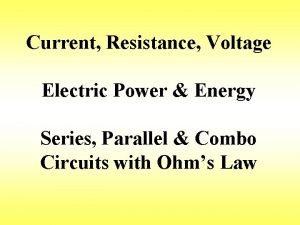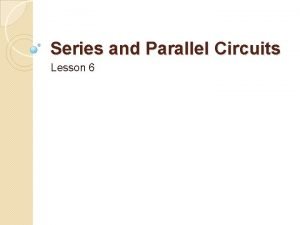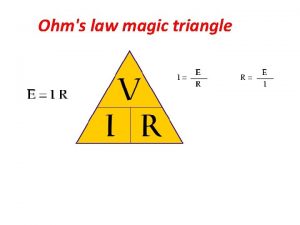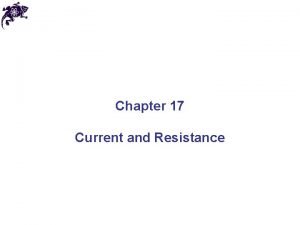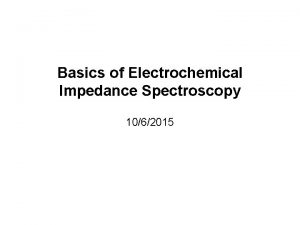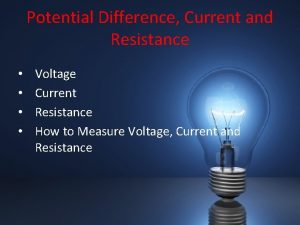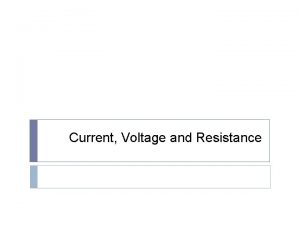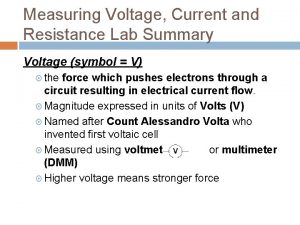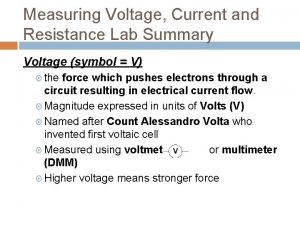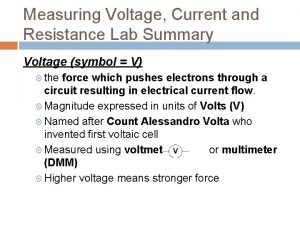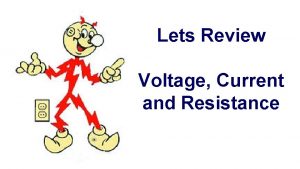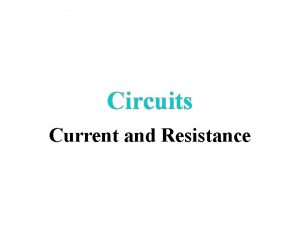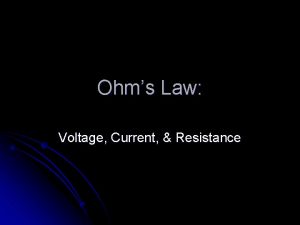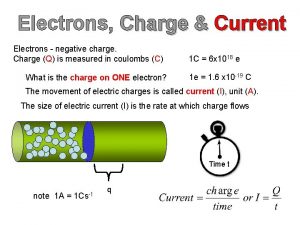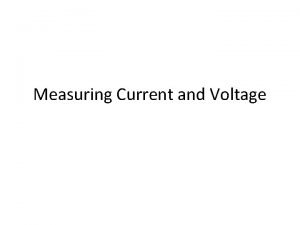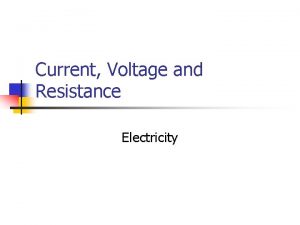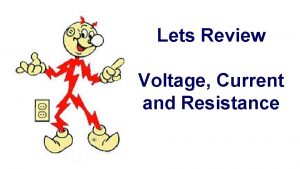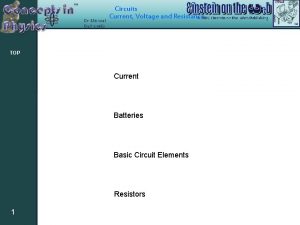Current Voltage and Resistance Voltage Voltage the charge
















- Slides: 16

Current, Voltage, and Resistance

Voltage • Voltage: the charge (electron) “pusher. ” Voltage causes current to flow/move. • Voltage sources: • Battery • Generator • Outlets • Symbol for voltage = V • Unit for voltage = Volts (V)

Alessandro Volta (1745 – 1827) • Italian physicist • known especially for the invention of the electrochemical cell, aka the battery in 1800.

Voltage at Home • Power utilities use large generators to provide the 120 V that is delivered to your home outlets. • When you plug in something to the outlet (lamp, blow dryer, TV, etc) the voltage is applied across the circuit, allowing the charge to flow (electric current).

Current • Current: flow of charge (electrons) within a conductor or how fast charge is moving. • Charge will only flow if there is a voltage source (potential difference). • Symbol for Current = I • Unit for Current = Amps (A)

André Ampère (1775 – 1836) • French physicist and mathematician. • One of the main discoverers of electromagnetism. • SI unit of measurement of electric current, the ampere, is named after him.

What level of current is dangerous to people? Current in Amps Effect on A Person 0. 001 Amps Can be felt 0. 005 Amps Painful 0. 010 Amps Involuntary muscle spasms Loss of muscle control 0. 015 Amps 0. 070 Amps If through heart, serious injury, likely fatal if it lasts more than 1 second

Resistance • Resistance: opposes the push from the voltage source. Resistance affects the speed of the current. • Symbol for Resistance = R • Unit for Resistance = Ohms (Ώ)

Georg Ohm (1789 – 1854) • German physicist • Ohm determined that there is a direct proportionality between the voltage applied across a conductor and the electric current. • This relationship is known as Ohm's law.

Voltage and Current • If the voltage in a circuit increases, the current will increase. • If the voltage in a circuit decreases, the current will decrease. • This is a direct/proportional relationship.

Resistance and Current • If the resistance in a circuit increases, the current will decrease. • If the resistance in a circuit decreases, the current will increase. • This is an inversely proportional relationship.

Ohm’s Law • State the relationship between current, voltage, and resistance. • German physicist George Ohm had the law named after him, because of his extensive research.

Ohm’s Law Voltage is equal to the current multiplied by the resistance. Voltage, measured in Volts, V Current, measured in Amps, A V=IR Resistance, measured in Ohms, Ω

Ohm’s Law Examples… • If you want to find Voltage in Volts: V = IR If I= 2 A and R = 5 Ohms Then, V= (2 A)(5Ω) = 10 V

Examples… • If you want to find Resistance in Ohm’s: R=V/I If V = 9 Volts and I = 4 A Then R = 9 V/ 4 A = 2. 25 Ω

Examples… • If you want to find Current in Amps: I=V/R If V= 140 V and R = 2Ω Then, I = 140 V/ 2Ω = 70 A
 Current total in parallel circuit
Current total in parallel circuit Lesson 6 current voltage and resistance in a circuit
Lesson 6 current voltage and resistance in a circuit Holmes law electricity
Holmes law electricity Rate of filtration equation
Rate of filtration equation Force of air resistance
Force of air resistance 17-1 current and resistance answers
17-1 current and resistance answers Current potential difference and resistance
Current potential difference and resistance Young and freedman
Young and freedman Difference between charge and electric charge
Difference between charge and electric charge Difference between static and current electricity
Difference between static and current electricity Warburg impedance basics
Warburg impedance basics Electrochemical impedance spectroscopy basics
Electrochemical impedance spectroscopy basics Why resistance opposes the flow of current
Why resistance opposes the flow of current Y connected generator
Y connected generator Phase to phase voltage
Phase to phase voltage N=nc exp(-eg/2kt)
N=nc exp(-eg/2kt) Ac systems lesson 4
Ac systems lesson 4
